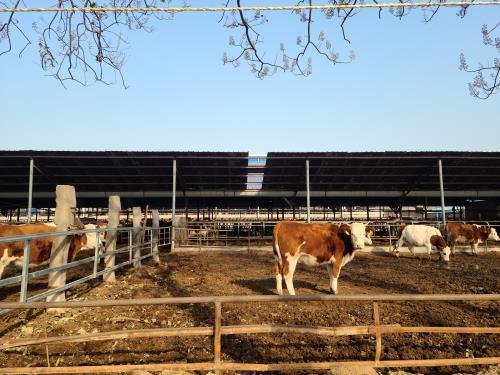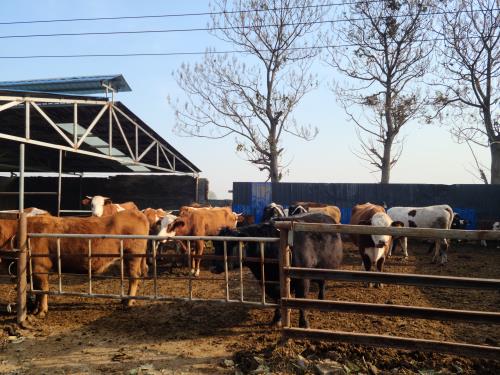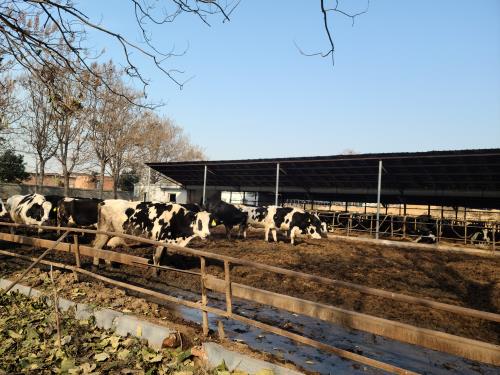As livestock management becomes more science-driven, more producers around the world are discovering that ultrasound isn’t just for vets in a clinic—it’s a practical, hands-on tool that farmers can learn to use themselves. And that’s where Cattle Ultrasound training comes in. Whether you’re working on pregnancy diagnosis, monitoring ovarian cycles, checking for delayed ovulation, or evaluating muscle and fat development, knowing how to use an ultrasound properly can make a real difference in herd health and profitability.
Let’s break down how cattle ultrasound training works in the real world, and why it’s becoming a standard part of modern ranch life.

Why Learn Ultrasound for Cattle?
Ask any seasoned cattle producer and they’ll tell you: experience matters. But technology helps. Ultrasound bridges both. Unlike traditional palpation or relying solely on visual cues, ultrasound provides a live, inside look at what’s going on in the animal’s body. And when you know how to interpret that image—whether it’s a corpus luteum on an ovary or a developing fetus—you gain confidence in your decisions.
Here's what producers usually gain from ultrasound training:
Earlier pregnancy detection (as early as 21 days)
Better estrus cycle monitoring
Real-time assessment of reproductive health
Efficient culling and breeding choices
Improved timing for artificial insemination
That means less guessing, more precision—and that’s gold for a working farm.
What Do You Learn in Cattle Ultrasound Training?
Training programs vary, but most cover two main areas: reproductive ultrasound and growth/performance ultrasound. Both rely on B-mode ultrasound technology, which provides real-time 2D images of tissue structures.
1. Reproductive Ultrasound
The core of most training sessions involves learning to identify:
Ovaries and follicles
Corpus luteum (CL)
Uterine horns and the presence of fluid
Embryos and fetal development
Reproductive pathologies (e.g., cysts)
Hands-on training focuses on probe positioning—typically transrectal—for reproductive exams. Understanding image orientation, probe depth, and animal restraint is key. While it sounds complicated at first, most producers get the hang of it within a few sessions.
2. Growth & Carcass Trait Ultrasound
This is where ultrasound meets the business side of beef. Knowing how to measure muscle and fat in young cattle allows you to:
Select animals for finishing or early slaughter
Optimize feeding strategies
Track muscle growth and fat accumulation
The most common scan site is the Longissimus dorsi muscle between the 12th and 13th ribs. With the right training, you can assess three key carcass traits:
| Parameter | Description |
|---|---|
| Eye Muscle Area (EMA) | Measures muscle development; higher EMA means better meat yield. |
| Subcutaneous Fat Thickness | Indicates readiness for market and overall fat cover. |
| Intramuscular Fat (Marbling) | Correlates with meat quality; more marbling often means higher value cuts. |
Learning to position the probe, freeze the image, and use measurement tools on the screen takes a little practice, but the feedback from live scans helps speed up the process.

A Day in Ultrasound Training
In the field, ultrasound training sessions often combine short lectures with long, hands-on time working directly with cattle. This makes sense—no two animals are exactly the same, and building confidence comes from scanning lots of animals in different reproductive or growth stages.
A typical day might include:
Reviewing reproductive anatomy with diagrams and images
Demonstrating how to prep the rectal area, apply coupling gel, and safely insert the probe
Live scanning sessions with guided interpretation from an instructor
Troubleshooting image quality issues
Reviewing saved ultrasound images for deeper analysis
Trainers often include veterinarians, experienced tech users, and equipment manufacturers. And in many cases, after just two or three days of intensive practice, participants can perform basic scans on their own with reasonable accuracy.
What Equipment Is Used?
Most cattle ultrasound training programs use portable or handheld ultrasound machines, often with rectal linear probes for reproductive work and external convex or linear probes for growth evaluation.
Popular models in the field include:
BXL-V50 or BXL-S300 (rugged, high-definition portable systems)
Ibex Pro (used widely in North America)
Draminski and Easi-Scan units (common in Europe)
Features that trainers emphasize:
Probe image resolution
Battery life for field use
Screen brightness in daylight
One-hand operation design
Freeze and measurement functionality
Students are encouraged to try multiple systems to find what fits their workflow best.
Challenges and Common Mistakes
Learning to use ultrasound doesn’t come without bumps. Some common challenges include:
Misidentifying structures (e.g., confusing a fluid-filled follicle with a cyst)
Failing to locate both ovaries due to poor probe angle
Over-freezing or under-freezing the image
Not using enough gel, leading to poor signal quality
But that’s why training is so important. Feedback from instructors in real time can correct habits before they become problems.
Many programs now include follow-up video consultations or access to image libraries, so students can continue learning even after they return to the farm.

Who Should Learn Ultrasound?
While ultrasound was once considered a vet-only skill, today’s producers, AI technicians, and even farm managers are picking it up. It’s especially helpful for:
Seedstock operations aiming to improve genetic selection
Beef finishing operations needing to optimize feed efficiency
Dairy herds focused on reproductive management
AI specialists timing insemination accurately
In the U.S., Canada, Australia, and parts of Europe, more universities and co-ops are offering training workshops tailored to different experience levels.
Real-World Benefits from Those Who’ve Learned
One Nebraska rancher shared that after learning how to detect pregnancy at 30 days with ultrasound, he no longer needed to rebreed 30% of his herd based on palpation error. Another producer in Queensland now uses ultrasound to monitor carcass traits and has reduced overfeeding by 15%, saving thousands in feed costs annually.
Those are just two of many stories where ultrasound has directly improved profitability, herd health, and confidence in decision-making.
What Does the Future Hold?
As wireless probes and AI image analysis improve, cattle ultrasound will become even more accessible. Some systems can now upload images to the cloud for expert interpretation, making it easier for smaller farms to benefit from the technology without needing a full-time vet on staff.
What’s even more exciting is the growing push to make ultrasound training part of vocational ag programs and community extension offerings. That means younger farmers will be entering the field already equipped with this vital skill.
Summary Table: Key Learning Areas in Cattle Ultrasound Training
| Training Topic | Skills Gained |
|---|---|
| Reproductive Scanning | Pregnancy diagnosis, estrus cycle monitoring, ovarian structure ID |
| Muscle & Fat Scanning | Evaluating EMA, subcutaneous fat, marbling for market readiness |
| Image Interpretation | Reading and measuring key structures, identifying pathologies |
| Equipment Handling | Probe positioning, animal restraint, gel application, freezing image |
Final Thoughts
Learning cattle ultrasound isn’t just about buying fancy equipment—it’s about knowing what you’re seeing and using that information to make smarter, faster decisions. Whether you’re managing 20 cows or 2,000, gaining ultrasound skills gives you a deeper understanding of your animals, and that’s something no spreadsheet or feeding chart can match.
As more producers worldwide share knowledge and build hands-on skills, ultrasound is quickly moving from a luxury to a necessity in everyday herd management.








